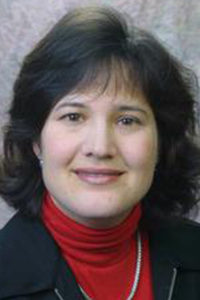Long-term, home-based noninvasive ventilation (NIV) is becoming more commonly used and is something clinicians are seeing more frequently, whether in clinic settings or when patients are presenting to emergency departments, wards, and ICUs.
The goal of Bells and Whistles of Long-term Noninvasive Ventilation: Device, Modes, Features and Interfaces on Monday is to make clinicians more comfortable initiating or managing patients who are on long-term noninvasive ventilation, according to the co-chairs of the session David Zielinski, MD, FCCP, and Lisa Wolfe, MD, FCCP.
By the end of the session, they hope the participants will have a better understanding of the different devices and modes as well as the different mask interfaces that are available, when to use which ones, and how to do basic troubleshooting. Dr. Zielinski and Dr. Wolfe explain more:

Why is long-term NIV an increasingly common modality used for patients with conditions such as neuromuscular disease, COPD, and obesity hypoventilation syndromes (OHS)?
Dr. Wolfe: I think there are several factors in play here. First of all, with ongoing research and experience, we are learning more and more about the benefits NIV can play in the conditions mentioned. Some of the benefits include improving quality of life, decreasing hospitalizations, and prolonging life expectancy. We also are seeing an expansion of individuals who may benefit from long-term NIV: Obesity has been increasing in society, leading to more severe obstructive sleep apnea and OHS. We also are seeing new disease-modifying agents in neuromuscular disease, such as in spinal muscular atrophy that are leading patients and families to choose to initiate long-term mechanical ventilation that in the past may not have.

Dr. Zielinski: Another significant factor is advancements in technology. Home-based care has been made easier due to smaller devices, more plentiful mask choices, real-time remote monitoring, and advanced self-titrating modes. These kinds of technology advancements have allowed wider access to patients who are not cared for in large dedicated home ventilation centers. Finally, and perhaps most importantly, patients and families are increasingly informed today about treatments and long-term noninvasive ventilation options available to them and expect clinicians to be able to offer these.
How many devices can clinicians choose from? How does that both complicate and help things?
Dr. Zielinski: As implied in this question, the amount of devices that are commercially available is incredibly vast, and the choices can be overwhelming. I am probably only very comfortable in using a few specific devices of the 75 or so listed in the International Ventilators Users Network database. In fact, that is probably all you need and part of what we want to do is to really break it down for the clinician to basic groups of devices and make them more comfortable choosing the right type of device for the right patient.
Dr. Wolfe: It is true that in any health system, the fewer devices, the more uniform the training and the higher the quality of care. Too many devices can contribute to confusion and unintended errors. The devices have to be used by both inpatient and outpatient care providers in order to allow for seamless care that naturally floats through the entire health-care system. Fewer devices can assist in this process as well. Balancing out the need for technological advancements in modes and devices with the need to have uniformity in the system to reduce errors—that balancing act is our greatest challenge. That is what fuels us to develop these sessions at our national meeting.
What tips/advice would you give for troubleshooting modes, devices, and interfaces in progressing neuromuscular disease?
Dr. Zielinski: I think the first step for troubleshooting is to try to avoid the problems in the first place. Knowing how devices work, how to choose initial settings including mode, pressures used, respiratory rates, rise times, trigger, and cycling sensitivities for the appropriate patient will go a long way to avoid complications. Often one of the biggest issues is being able to find an appropriate mask, and we will guide clinicians through this. There are also some key differences between the major manufacturers for similar modes that may have significant implications for the patient, and we will make sure the participants leave this session aware of these as well.
Dr. Wolfe: The biggest mistakes are made by using automated modes with all of the settings wide open. We encourage physicians to look at their patients’ needs to try to focus down the setting parameters. Physicians often focus on inspiratory and expiratory pressures, but patient comfort is often driven by the minor settings. Adjustments of trigger, cycle, rise, and inspiratory time will often be the key to trouble shooting. We also will look at how to use the information available from the devices in the forms of downloads and how to identify and manage the common complications and difficulties.



